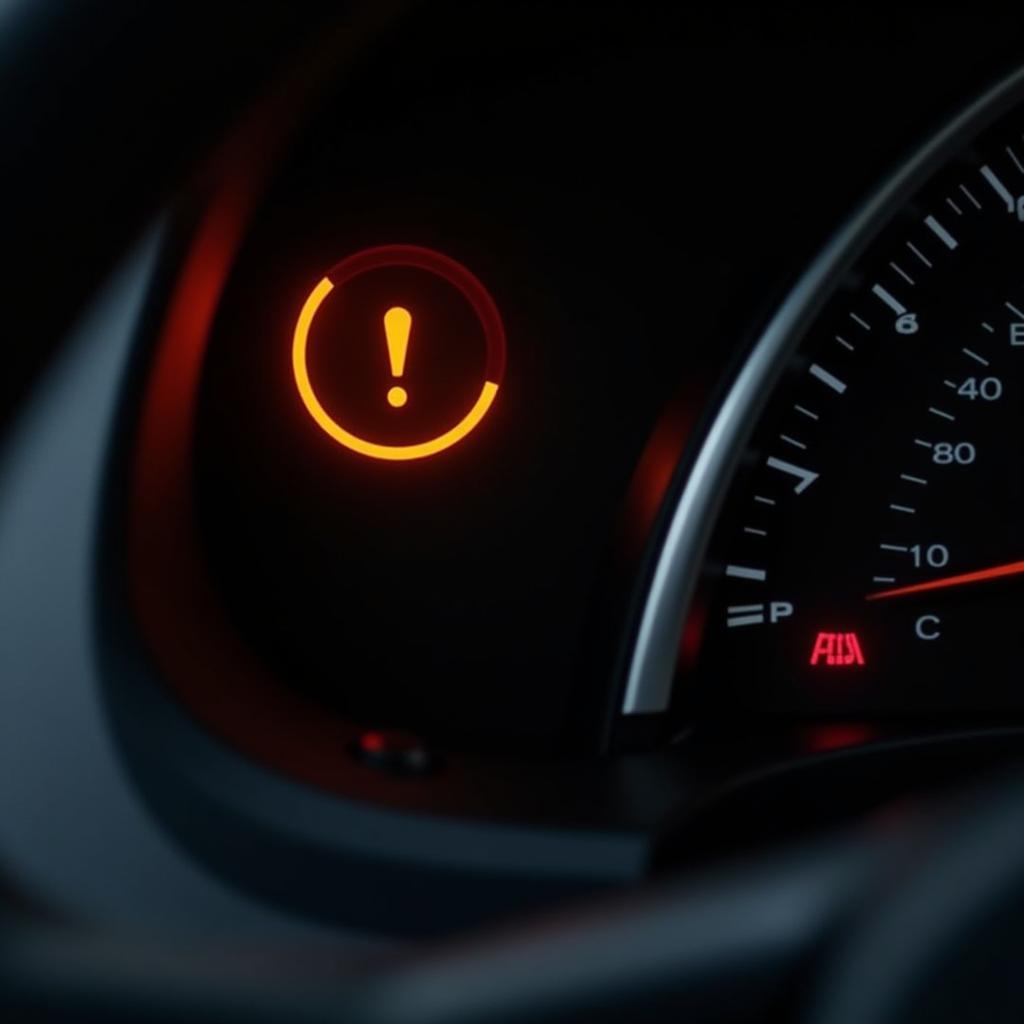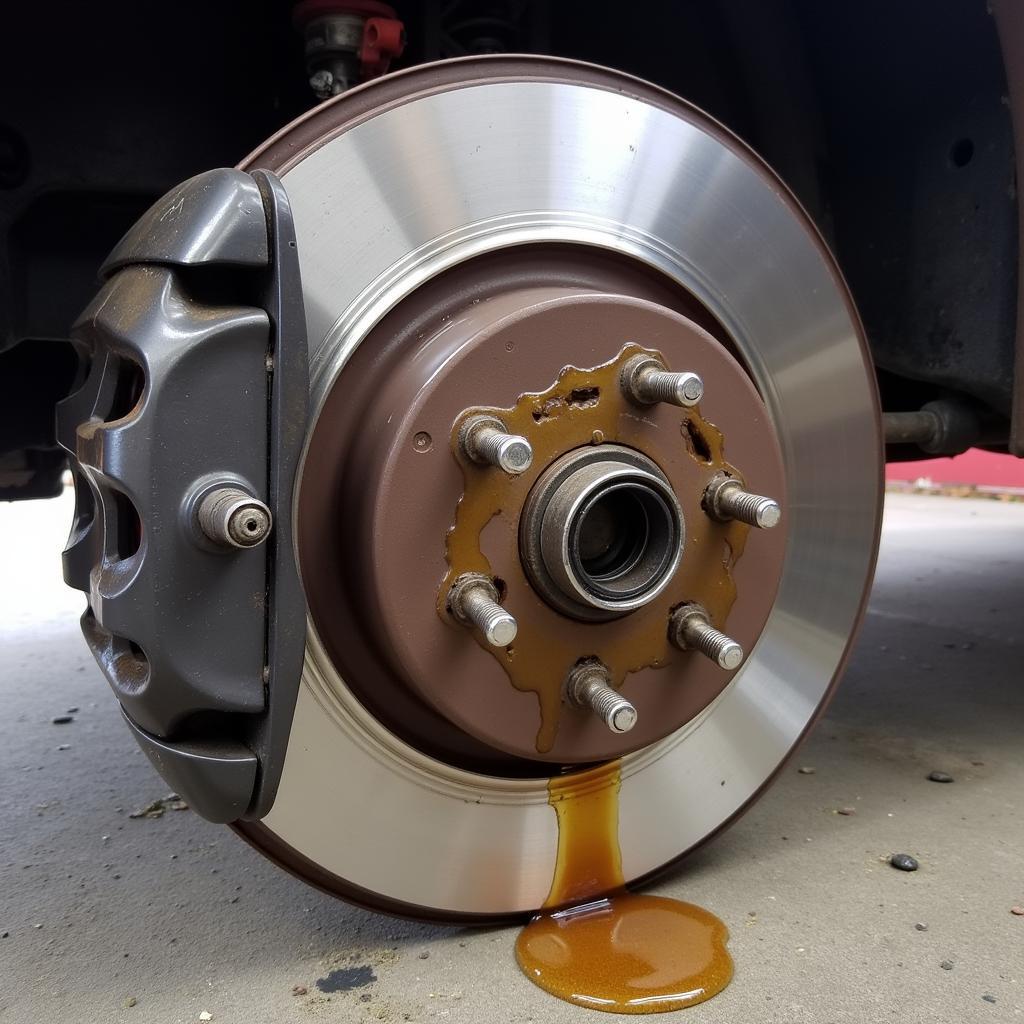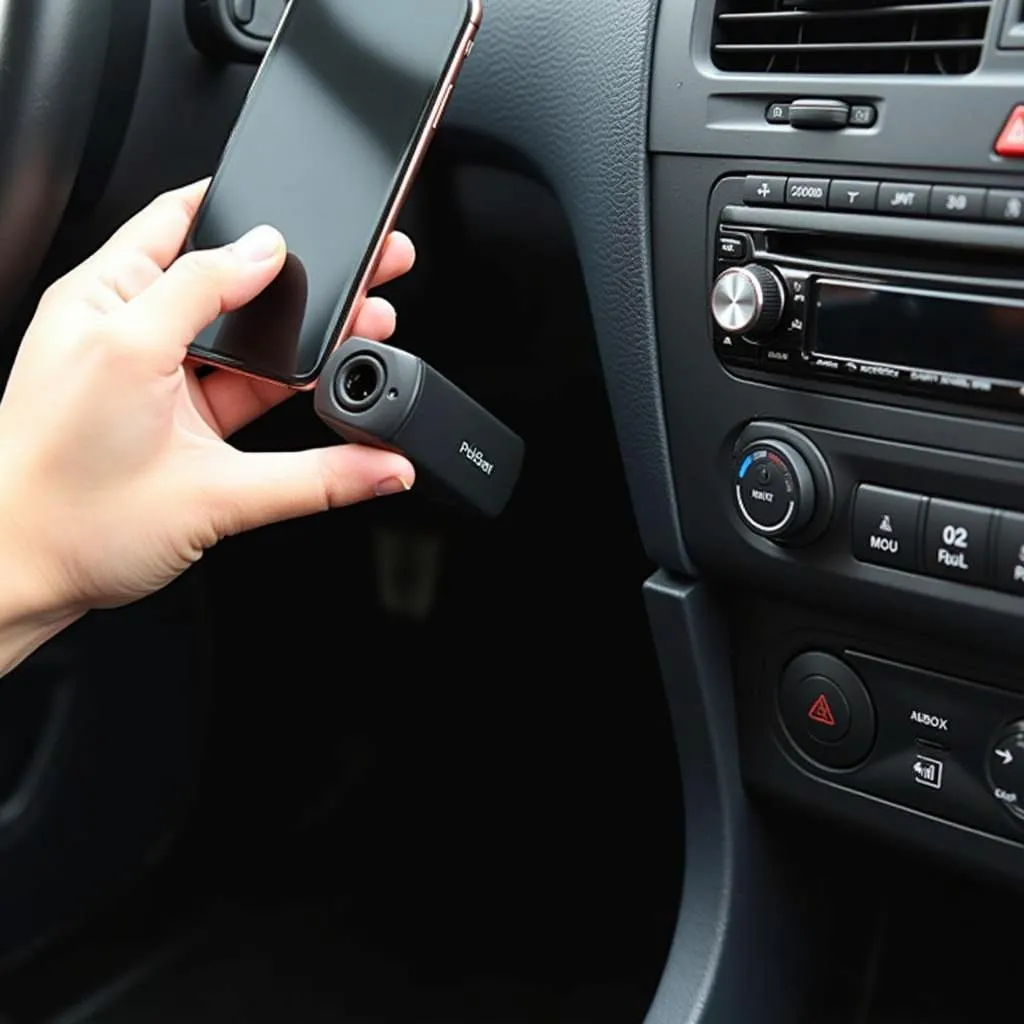Seeing a low brake fluid level warning light on your dashboard can be unnerving. This warning, often symbolized by a circle with parentheses and exclamation mark or the word “BRAKE,” indicates a potentially serious issue with your car’s braking system. Ignoring it can lead to decreased braking ability and even complete brake failure. This article delves into the common causes of a low brake fluid level warning light, provides solutions to fix the issue, and offers expert advice on preventing future occurrences.
 Low Brake Fluid Warning Light
Low Brake Fluid Warning Light
Understanding Your Brake System and Brake Fluid
Before diving into the causes of a low brake fluid level warning, it’s essential to understand the basics of your car’s braking system and the crucial role brake fluid plays.
Your car’s braking system operates on hydraulic pressure. When you press the brake pedal, it activates a piston in the master cylinder, pushing brake fluid through hydraulic lines to the brakes at each wheel. This pressure forces the brake pads against the rotors (or drums), creating friction that slows down the vehicle.
Brake fluid, a special type of hydraulic fluid, is the lifeblood of this system. It’s responsible for transmitting the force from your foot on the brake pedal to the wheels, enabling the vehicle to stop.
Why Is My Low Brake Fluid Level Warning Light On?
The most common reason for a low brake fluid warning light is, unsurprisingly, low brake fluid level. However, there are other potential culprits:
1. Worn Brake Pads
As your brake pads wear down over time, the brake calipers need more brake fluid to function correctly. This can lead to a drop in the brake fluid level, triggering the warning light.
2. Brake Fluid Leak
A leak anywhere in the braking system, from the master cylinder to the brake lines and calipers, can cause a loss of brake fluid and activate the warning light. Leaks can occur due to:
- Corrosion: Brake lines, especially metal ones, are susceptible to corrosion over time, leading to leaks.
- Worn Seals: The master cylinder and calipers contain rubber seals that can wear out, causing fluid to escape.
- Damaged Components: Physical damage from road debris or accidents can result in leaks in the braking system.
 Brake Fluid Leak on Caliper
Brake Fluid Leak on Caliper
3. Faulty Brake Fluid Level Sensor
While less common, a malfunctioning brake fluid level sensor can also trigger the warning light, even if the brake fluid level is adequate.
“It’s crucial to remember that a low brake fluid level is a symptom of a problem, not the problem itself,” says John Bennet, Senior Automotive Engineer at Car Repair Solutions. “Ignoring the warning light and simply topping up the fluid without addressing the underlying cause can lead to dangerous situations.”
What To Do When Your Low Brake Fluid Level Warning Light Comes On
If your low brake fluid level warning light illuminates, follow these steps:
- Safely Pull Over: Find a safe location to pull over as soon as possible.
- Check Your Brake Fluid Level: Locate the brake fluid reservoir (consult your owner’s manual if unsure). Most reservoirs are translucent, allowing you to check the fluid level visually.
- Do Not Drive If the Level is Low: If the brake fluid is below the minimum mark, it’s unsafe to drive. Continuing to drive with low or no brake fluid can lead to brake failure.
- Call for Assistance: Contact a qualified mechanic or roadside assistance. They can diagnose the issue, whether it’s worn brake pads, a leak, or another problem, and perform the necessary repairs.
How to Prevent Low Brake Fluid Issues
Prevention is always better than cure. Here are some ways to proactively maintain your braking system and prevent low brake fluid issues:
- Regular Brake Inspections: Get your brakes inspected by a qualified mechanic at least once a year or as recommended in your owner’s manual. They can check for wear and tear on brake pads, lines, and other components.
- Timely Brake Pad Replacement: Don’t wait for your brake pads to wear down completely before replacing them. Follow the manufacturer’s recommended replacement intervals or consult your mechanic.
- Quality Brake Fluid: Use high-quality brake fluid that meets the specifications recommended by your car manufacturer.
- Address Leaks Immediately: If you notice any signs of a brake fluid leak (such as fluid under your car or a soft brake pedal), address the issue immediately.
Conclusion
The low brake fluid level warning light is a crucial safety indicator in your vehicle. Understanding its causes and taking appropriate action can prevent dangerous situations and keep your car stopping safely. Regular maintenance, timely repairs, and a proactive approach to your car’s braking system are essential for safe driving.
Frequently Asked Questions
1. Can I add brake fluid myself?
While you can temporarily top up brake fluid to reach a safe driving level, it’s essential to remember that this is not a long-term solution. It’s crucial to have a mechanic diagnose the underlying cause of the low fluid level.
2. What kind of brake fluid does my car need?
Refer to your owner’s manual for the specific type of brake fluid recommended for your vehicle. Using the wrong type of brake fluid can damage your braking system.
3. How often should I flush and replace my brake fluid?
It’s generally recommended to flush and replace your brake fluid every two years or as recommended by your car manufacturer.
4. Is it safe to drive with the brake warning light on?
It’s unsafe to drive with the brake warning light on, especially if the brake fluid level is low. Driving without adequate brake fluid can lead to brake failure.
5. How much does it cost to fix a low brake fluid issue?
The cost of repair depends on the underlying cause. A simple brake pad replacement is less expensive than fixing a leak in the brake lines.

